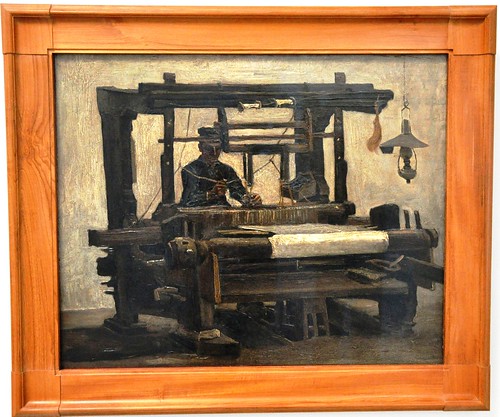Analysis of The Night Cafe – Vincent van Gogh

Image : http://www.flickr.com
Vincent‘s Two Cafes
“I often think that the night is more alive and more richly colored than the day.” Vincent van Gogh
Van Gogh‘s two ultra-famous café scenes comprise a study in opposites. Though both paintings employ Vincent‘s famous bold and furious brushstrokes and striking colors, the two pictures feel entirely different. One, “Café Terrace at Night,” is lovely and full of a frothy light, a night scene with stars outside the café on the Place de Forum. The other, “Night Café,” is, in the artist’s own words, “…one of the ugliest I have ever done,” a collection of clashing colors in the dreariest atmosphere.
Both paintings were made in Arles after van Gogh had lived and studied in Paris, and met various French impressionists. His own style became much lighter, less moralistic and more rife with color.
“Night Café” depicts the interior of a pool in Arles’ Place Lamartine. A more striking van Gogh canvas would be difficult to find, but no one could call this particular picture beautiful. It was the artist’s intention to show the lowest edge of humanity, without adornment, with as much impact and sincerity as possible.
There is no doubt he succeeded. Upon first glance, the viewer almost tends to glance away, as if burned. Fully two-thirds of the painting is the floor of the café, executed in sulphuric yellow with exaggerated lines of perspective that yank the eye into the painting. Next, a green billiard table, outlined in heavy black, stops us cold. Beside the table stands a figure in a light-colored coat, staring out at us without expression.
“I have tried to express the terrible passions of humanity by means of red and green,” van Gogh wrote. Yellow walls give on to blood-red walls that lead to an obtrusive green ceiling, and lining the walls are the locals at the bar tables, hunched over in late-night stupor. Lamps hang from the ceiling, surrounded by Vincent‘s wheels of curving yellow strokes.
A stark black and white clock depends in the background, impossible to miss. It is almost a quarter past midnight in this desolate scene. “Night Café” is one of Vincent‘s most powerful communications through art of the human condition and human emotions.
The other van Gogh café painting, “Café Terrace at Night,” shows the exterior of a café which still stands in Arles, though it was renamed The van Gogh Café and remodeled to closely resemble the painting which immortalized it. He painted this work in a flurry, using many of the same techniques he employed in his drawings. This is one of his most beautiful paintings, full of the light and peace he sought, but never found.
Perspective and warm complementary colors draw the viewer into the painting and beyond. The graphic texture of the street’s cobblestones invite the eye toward the little café itself, with its tiny white tables on the street, repeating the spheres of Vincent‘s stars hung in the Prussian blue sky. The awning and walls of the café, warm yellow, cut into the sky to enhance both colors and form the main composition.
Van Gogh loved the night. He writes, “I have a terrible need of–dare I say–religion…then I go outside at night and paint the stars.” He painted this night scene on the spot, at night, using no blacks. His father was a preacher and Vincent went into the ministry for a while. It was later that this artist, now a star himself posthumously, decided his ministry would be to find a way to give hope and consolation to humanity through his art.
Thanks To : Scubaequipment welcomeholidayservice